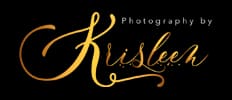What inspired the pin-ups of the 1920s and 1930s? Who were these girls?
The Roarin’ 20s
Picking up where we left off: after the end of the Great War and the survival of the Great Influenza Epidemic, the “Roarin’ 20s” were a time to celebrate. The economy was flourishing, the Jazz Age was happening, and women had won the right to vote. There was a general feeling of novelty, and the women of the roaring 20s were not willing to surrender the freedom they had acquired while their husbands were away fighting in Europe. With the overall atmosphere of liberation, inhibitions faded, and youth demanded new experiences and freedom from old control. The fashion for women was all about getting loose. Corsets were discarded, and dresses were worn all day, every day. Enter the “Flapper.” They wore short skirts, bobbed their hair and wore makeup. Listened to Jazz, smoked cigarettes and drank alcohol in public.

These women were fearless and open-minded, and they did not care what the conservative society thought about them. Some famous Flappers were Clara Bow, Zelda Fitzgerald, Josephine Baker and Barbara Stanwyck to name a few.

Alberto Vargas, a famous pin-up illustrator, was discovered in 1919 by Ziegfeld Follies, a lavish production featuring young, beautiful elaborately costumed showgirls, and was commissioned to paint the stars of the follies.

There was so much happening in the 1920s (I could go on and on!), but I am going to try to restrict the “history lesson” to Pin-Ups and Flappers. In 1929, the Stock Market Crashed, otherwise known as the Great Crash. Despite financial setbacks, this did not mean the end of the Pin-Up.
In the 1930s, women were beginning to radiate a subtle, electric sexuality that lit up the silver screen. The history of the pin-up girl is bound up with the rise of feminism and women’s liberation. They were glamorous, sexy, powerful, and flirtatious; these women embodied eroticism and sensuality.
Burlesque & Cheesecake
Burlesque striptease came into its own, around this time as well. Though burlesque started in the twenties, the burgeoning scene of burlesque boomed throughout the 1930s. Famous stars of that stage included Josephine Baker, Sally Rand, and Gypsy Lee Rose. It has been said that during this time, burlesque was truly elevated to an art form.

The “art” of seduction, glamor and “cheesecake” gained momentum in the 1930s. “Cheesecake” was an American slang word that became a publicly acceptable term for scantily clad, semi-nude, or nude photos of women, as Pin-Up was considered taboo in the early 20th century. There were many Pin-Up illustrators of the twenties and thirties; three of my favorites are George Petty, Alberto Vargas and Gil Elvgren (known as the Norman Rockwell of Cheesecake, as his subjects were often depicted in humorous situations).


| That sums up the Pin-Up girl in the 1920s and 1930s. Tune in next time to learn about the “Golden Age” of Pin-Ups – the 1940s! If you missed the first post in this series, read the Origination of the Pin-Up Girl here. |
